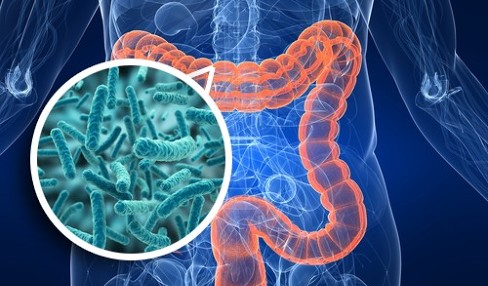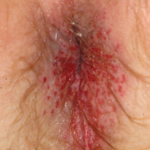Dysbiosis

The western world’s altered lifestyle, with little physical exercise and a diet full of refined, denatured products lacking in fibre, plus environmental pollution, the overuse of toxic substances (alcohol, smoking, etc.) and drugs, the habit of postponing defaecation when the stimulus arises and stress and prolonged emotional tension, all lay the foundation for colonic malfunction. Under these conditions the normal composition of the intestinal bacterial flora can be significantly altered and become putrefied. Simple dysbiosis concerns mainly aerobic (39%) and anaerobic bacteria (26%), and parasites such as G. lamblia (26%). Fungi and yeasts make up less than 8% in these cases but in complex and mixed dysbiosis these play a much more important role; amongst these, the most common is certainly Candida albicans, present in 72.1% of cases.
In 1991, the German researcher Perger demonstrated that most types of dysbiosis are iatrogenic, that is caused by taking drugs: prolonged use of antibiotics, anti-cancer agents, drugs which block ovulation, immunosuppressants, exposure to ionizing radiation; all can cause a change in the state of the intestinal bacterial flora. In a study, Perger demonstrated that 78% of patients examined by him had not been advised to take any treatment to restore the normal bacterial flora after antibiotic therapy. In 45% of these subjects there was a severe dysbiosis and in 55% of them varying degrees of intestinal mycosis. Poisoning by heavy metals, such as mercury, lead, chromium and cadmium is also implicated.
Anatomical conditions can be responsible for dysbiosis: diseases causing stenosis (= narrowing) of the intestine, such as Crohn’s disease, colon cancer, advanced stage diverticular disease; extensive intestinal resections and intestinal bypasses performed for various diseases; intestinal infections by bacteria and viruses; or pathological conditions such as pancreatic disease, intestinal malabsorption conditions and diseases which reduce gastric acidity.
In patients with dysbiosis, some degree of constipation is a frequently found, although dysbiosis is possible in those who evacuate every day and even several times a day (there are also cases of intestinal dysbiosis which occur with diarrhoea). Constipation can be due to several causes: 1) the inability of the segments on the right-hand side of the colon to promote proper peristalsis in order to advance the intestinal contents; 2) functional disturbances of the final part of the colon, the rectum, in which the muscles do not coordinate properly during defecation due to changes in the normal nerve reflex mechanisms which automatically regulate intestinal emptying; 3) an excessive sedentary lifestyle and a lack of tone in the abdominal muscles; 4) an incorrect diet. The slowing of the transit of the intestinal contents causes an alteration in the natural balance and a disproportionate and unbalanced growth of pathogenic microorganisms.

Finally, the normal diet in Western countries is very rich in carbohydrates (= sugars), refined and fermented foods and animal fats, with a low fibre content. This alone leads to constipation as already mentioned and can itself be the cause of dysbiosis. Furthermore, a considerable portion of the putrefying bacterial flora, the mycotics (= small fungi, moulds and yeasts) draw their nutrients from these substances and thus tend to proliferate dramatically in the presence of excessive amounts of such foods: the result is an intestinal mycosis, with an increase in the processes of putrefaction in the intestine and the appearance of widespread symptoms throughout the body. Some foods, such as meat, dairy products and white flour, are also able to overstimulate the production of intestinal mucus; faeces containing excessive mucus are more difficult to expel.

Thirty six toxic substances are produced by, and have been isolated from, the colon (including ammonia, phenol, skatole, indole, mercaptan and hydrogen sulfite) and come primarily from bacterial digestion of ingested protein residues. After passing through the wall of the colon, these substances are absorbed into the bloodstream and transported straight to the liver. The liver cells, in addition to collecting, handling, storing and redistributing digested fats, proteins and carbohydrates, also have the task of inactivating all the toxins (= poisonous substances) present in the blood and removing them from the system. When toxins are present in quantities which are too high to be properly dealt with by the liver, the whole organism’s health may suffer: in such cases we talk about auto-intoxication or toxaemia. Toxaemia, a natural consequence of dysbiosis, is a particular form of auto-intoxication of the organism resulting in an abnormal increase in putrefaction. It causes an alteration of homeostasis, by which we mean the balanced relationship between the various substances of which the organism is composed, including the essential nutrients. This generally occurs when the activity of the colon is not regular, or when the liver has some disease which reduces its activity, but the first reason is the most common. Toxaemia begins in the colon but its harmful effects are seen in a variety of the body’s cells, with molecular changes which alter the biochemical processes of sub-cellular organelles: normal cellular functions may be reduced or completely blocked and such limitations may cause impairment or disease of the organ to which these cells belong.
The person suffering from toxaemia presents symptoms such as fatigue, irritability, lack of concentration, aggressiveness, high blood pressure, memory disorders, muscle weakness, nutritional deficiencies, premature skin ageing (wrinkles) and skin disorders (acne, psoriasis, various types of dermatitis), hormonal changes, menstrual cycle disorders, headaches and migraines, pain and joint stiffness, lumbar pain, allergies, asthma, eye, ear, nose and throat disorders, cardiac arrhythmias, the formation of breast lumps, thyroid disorders and acceleration of the ageing process (early senility). As well as symptoms of a general nature, there are abnormalities of the gastrointestinal tract with reduction in intestinal transit times, increased gas production, bloating, flatulence, feelings of abdominal distension and the development of mycoses. Finally, the immune system can also be affected: the intestinal walls are home to a large part of this defence system (macrophages, free B and T lymphocytes and those stored in follicles and plaques, immunoglobulins) so that it can more easily act as a barrier against the spread of toxic substances. In fact, the mucosa covering the inside of the colon is one of the main systems used by the body to defend itself from toxic substances, as are the liver, kidneys, lymphatic system, lungs and skin. Changes in the normal anatomy and function of the colon significantly decrease the body’s defence capacity
To summarize, the chronic stasis of colonic material, abuse of certain drugs, contamination with toxic substances and an inappropriate diet and lifestyle alter the normal balance of intestinal flora and promote the abnormal growth of pathogenic microorganisms (= dysbiosis). This, in turn, is responsible for putrefaction processes which cause a variety of toxic metabolites to be produced (= toxaemia). When these enter the bloodstream and cannot be properly neutralized, they produce the “toxic syndrome.”
Dr Walker, after studying several hundred colons using the only examination then available, the barium enema, came to the conclusion that the consequences of an incorrect lifestyle even impact on the colon’s anatomy. It may lose its normal shape because of the internal presence of concretions and encrustations, so reducing the internal lumen through which faecal matter passes. The phenomenon is probably extremely widespread in “civilized” societies with a western lifestyle: Kellog, the well-known American surgeon and author of a famous treatise on the value of colon hydrotherapy, wrote, at the beginning of the century: ” Of the 22,000 operations I have personally performed, I have never found a single normal colon, and of the 100,000 that were performed under my jurisdiction, not over 6% were normal”. According to autopsy reports, many individuals have putrefied incrustations in the colon which can weigh as much as 3-4 kg.



